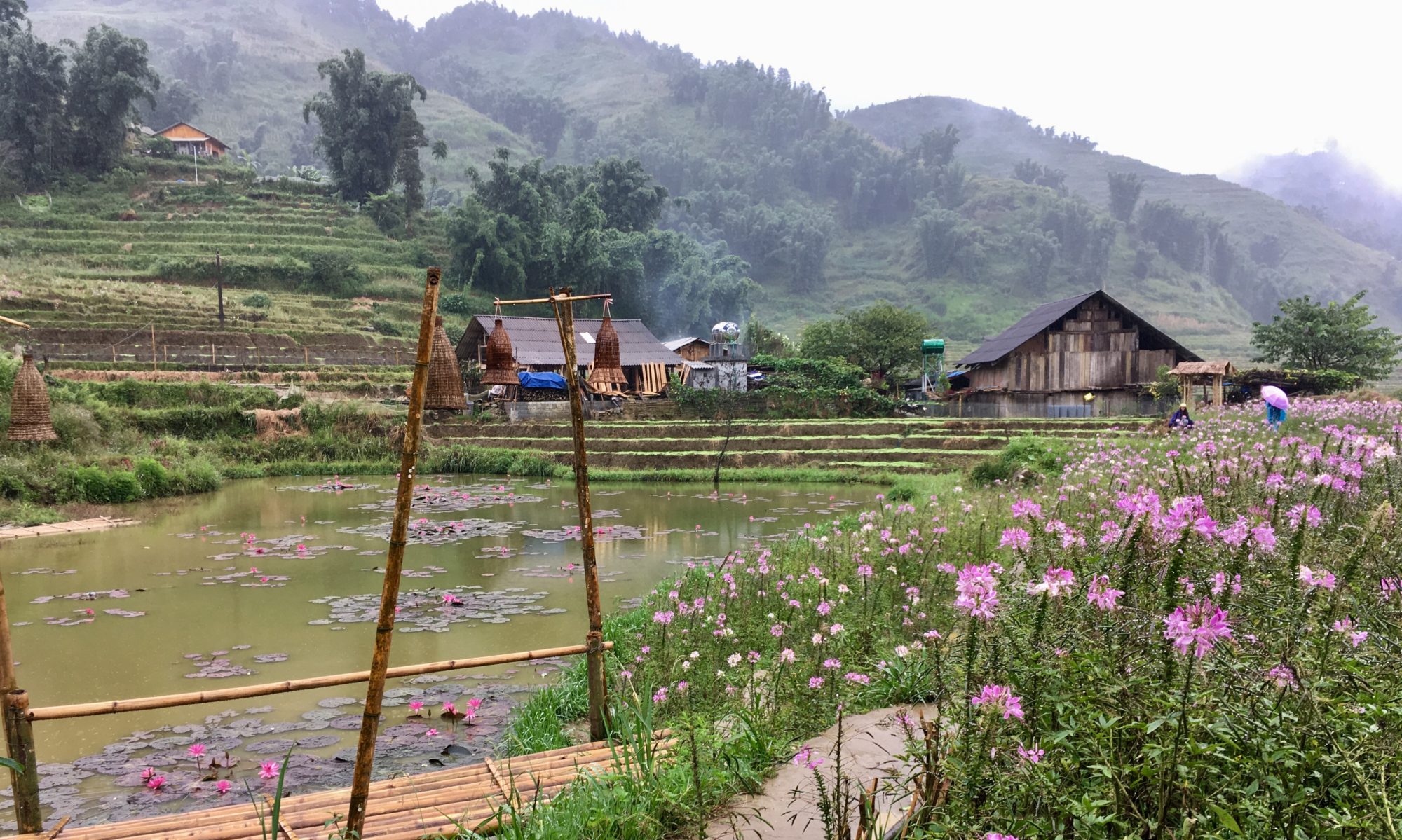In Myanmar, the levels of safety are categorized by color. Black (unsafe), brown (requires permission), and white (safe). A market along Inle Lake where we visited was ‘black’ up until 2005 while the ethnic tribes fought against the government for territory. Now hill tribes women with colorful scarves on their heads came down from their villages to sell green tea and wild turmeric among other locals selling scarves, fish, and jewelry.


We sampled food as we explored. A woman was making what looked like Thai coconut pancakes in a pan with concave holes. I bought a bag for 200 kyat (15 cents). The taste was surprisingly savory. Laurie, on her quest for a perfect coconut, bought one from a stand. “Not sweet”, she said, before buying a bag of dessert made of rice flour.


Laurie and I each got a bag of green tea leaves from a hill tribe’s woman for 500 kyat (40 cents) and wished we could buy more. But our backpacks were as tight as our stomachs.


Near there, a graveyard of a thousand stupas surrounds a village called Shwe Indein (shallow water). The ravaged stupas have been sitting neglected during the fighting and now some are undergoing renovations paid for by donations from around the world. I regret to say that the renovations left little to be desired – the ‘fixed’ stupas look new rather than renovated with respect to historical accuracy.



Our trip to Myanmar has been unforgettable. The people are kind, the food delicious, and the bus rides hellish. Regardless of the politics of this country, we were reminded that people and government do not always share an ideology. Each person just wants to live their life peacefully and hold their loved ones close to their heart.
Good night Myanmar. May you never lose the best parts of yourselves.


